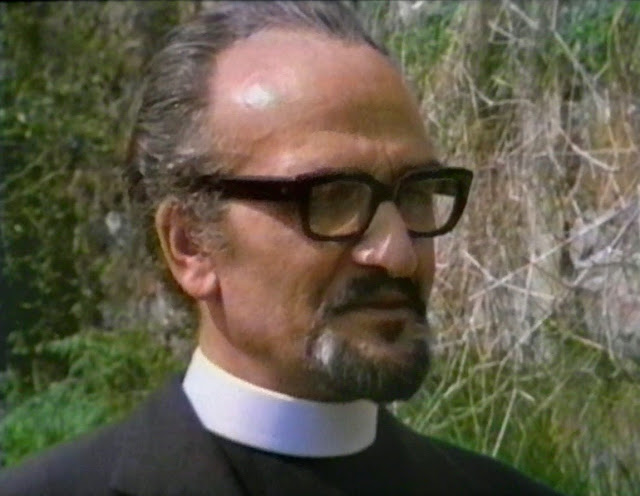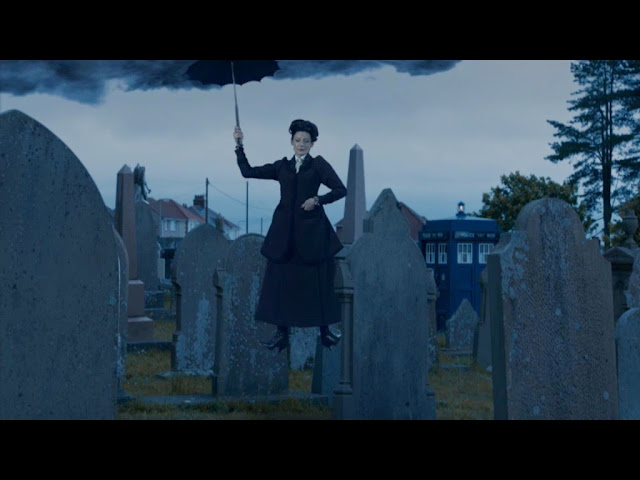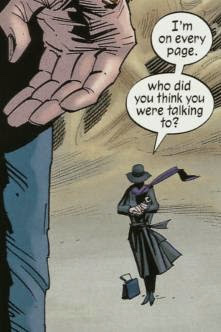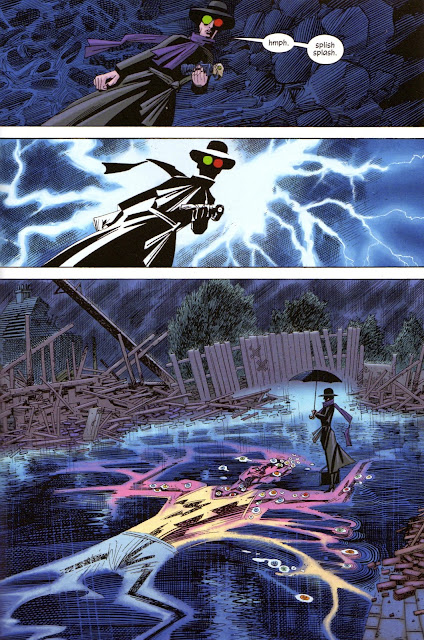Magician, Magickian, Mage, Magus or Magister...?
"You know what's even rarer in this world? Second chances - I don't even know who to thank..."
The Reverand Mr Magister.
Practioner of the Black Arts and Occult Science of the Dæmons of Dæmos
Magickian.
...and situated in direct opposition to the 3 W Offices...
Aka, The Master's TARDIS, aka Cyber-Control.
"On his return, Wren submitted his plans for old St.Paul’s, which were accepted in principle on 27 August 1666. One week later London was on fire. On 2 September a fire accidentally broke out in a baker’s shop in Pudding Lane. Fanned by strong east winds the fire raged for three days and destroyed two-thirds of the City of London. St.Paul’s Cathedral, 88 churches, 44 halls, the Royal Exchange, the Guildhall, the Customs House and 13,200 houses were destroyed. Between 5 and 11 September Wren ascertained the precise area of devastation, worked out a plan for rebuilding the city and submitted it to King Charles. There were five other proposals. On 20 October King Charles appointed Hugh May, Sir Roger Pratt and Christopher Wren as King’s Commissioners for the rebuilding of London. No radical replanning eventuated due to difficulties redistributing old land titles and compensation issues, so most of the old streets were retained. But the streets were made wider and the new buildings were constructed of brick or stone
In 1669 Sir John Denham, the King’s Surveyor of Works died and Christopher Wren was appointed in his stead. The job entailed looking after the fabric of all the Royal buildings apart from Windsor Castle, which had it’s own surveyor, and the Tower of London, which came under the Office of Ordinance. At that time Whitehall was the main palace. The Office of Works comprised the King’s Surveyor, the Comptroller, the Paymaster, Master Mason, and Master Carpenter. All of the above served on the Board of Works. In addition there were the Master Joiner, Plumber, Glazier, Sculptor, Blacksmith, the Sergeant Painter, Sergeant Plumber and a Clerk of Works for each Royal building. Wren received an annual salary of L382 5s 8d, a rent-free house with garden, coach-house and office at Scotland Yard and an official residence in Hampton Court Palace. No wonder he married his old sweetheart Faith Coghill the same year. His first job as Surveyor was to design the new Custom’s House, which he did in twenty-four hours!
A second rebuilding Act in 1670 paved the way for rebuilding 51 of the 88 churches lost in the Great Fire and Wren was put in charge. The rebuilding commenced with St.Dunstan-in-the-East in 1670 and finished with the steeple of St.Stephen Walbrook in 1717. But what should an Anglican Church be like? No new churches had been built for a very long time and there had been recent arguments over the position of the altar. Fortunately, since the Civil War the Anglican Church had decided on a middle path between the Arminian and Puritan extremes. Thus Wren designed most of the churches on simple rectangular plan. The altar was placed behind a low railing on the east wall and the pulpit in a prominent position between the congregation and the choir. Everything was planned so that the congregation could hear and see and participate in the service and upstairs galleries were often featured. Large windows allowed excellent natural light and the walls and ceilings were usually plain white. Nearly every church had a belltower with steeple. Only six of the churches were designed entirely by Wren, but he had overall responsibility for them all.
We now come to the extraordinary story of the building of the new St.Paul’s Cathedral. In July 1668, Wren got the call to design a new St.Paul’s, at the same time there was a Royal Order to demolish the old cathedral. Wren was provided with a suite of rooms in the Chapter House. Henry Woodroffe was appointed Assistant Surveyor and John Tillison Paymaster and Clerk of Works. Some of the stones and the lead were recycled and eventually 45,000 tons of rubble were carted away for use on the roads. The First Model for St.Paul’s was completed in the winter of 1669/70 but the design was not considered stately enough, so a new design was prepared over the winter of 1671/72. The new design featured a massive circular central area beneath a huge dome. Four equal sized naves or wings spread out from the central area forming a Greek cross. St.Peter’s Basilica in Rome was built on a similar plan until Carlo Maderna reluctantly extended the nave. King Charles finally approved the Greek Cross design a year later, with instructions to build a large model.
In the meantime demolition of old St.Paul’s had reached a standstill. The four pillars of the crossing-tower, each 14ft across, were proving impervious. Wren brought in a gunner from the Tower of London and having got labourers to hack out a recess in the base of the northwest tower, packed the hole with 18lb of gunpowder. The powder train was lit and the resultant explosion brought down the whole northwest angle of the tower along with the two arches that rested on it and parts of the adjoining aisles – some 3000 tons of masonry! Delighted, Wren left Woodroffe to blow up the rest of the tower, but Woodroffe overdid the gunpowder, sending showers of masonry into the surrounding houses. Dean Sancroft forbade any further explosions, so Wren came up with battering rams, which worked very well.
In November 1673, King Charles warranted the appointment of a Royal Commission for the Rebuilding of St.Paul’s Cathedral. The Commission consisted of the Dean and three residentiary canons of the chapter, the Archbishops of Canterbury and York and five other bishops, the Lord Chancellor, Lord Treasurer, two Secretaries of State, Christopher Wren, The Lord Mayor London, City Chamberlain, City Recorder and the Aldermen, plus a long list of Privy Councilors, Judges and Officers of the Royal Household. The quorum was six. On 14 November King Charles knighted Wren at five in the morning. Wren duly stood for the Oxford University Parliamentary seat, but lost.
Wren completed his Great Model of a modified Greek Cross design in October 1674. The model was large enough to walk through and can still be viewed at St.Paul’s. To Wren’s surprise and disappointment, the clergy didn’t like it! The Bishops and Canons were used Gothic cathedrals with long naves and choirs for processions and a fair bit of separation between congregation and clergy. They weren’t ready for a ‘church-in-the-round’ concept. Besides they liked to have two towers at the west front (Jachin and Boaz?) and a steeple. Wren accordingly came up with a new design in the spring of 1675. Called the ‘Warrant Design’, the plan features a long nave with parallel aisles, a long choir with the altar on the east wall and two transepts, thus forming a Latin Cross. There was a large circular space at the crossing under an interesting double dome topped by a tall pagoda-like steeple. The west front had a portico flanked by two towers. The clergy liked it and King Charles quickly issued a warrant for the design on 14 May 1675 but “the King was pleased to allow Wren the liberty in the prosecution of his work, to make variations, rather ornamental than essential, as from time to time he should see proper’. It is hard to believe Wren intended to carry out the Warrant Design and that the King was not in on the scam.
The foundation stone was laid by master mason Thomas Strong on 21 June 1675; the second foundation stone by master carpenter John Langland. The edifice that gradually rose behind the hoarding and scaffolding bore little resemblance to the warrant design, but it retained the Latin Cross plan, the central dome and the towers and portico to the west front. The great dome is a wonder of engineering. The inner dome or ceiling of stone has a circular opening that admits light from skylights in the outer dome high above. Above the inner dome, a brick cone supports the 850 ton stone lantern whilst the outer dome of lead is supported by timber framework. On 26 October 1708 Christopher Wren junior, witnessed by Edward Strong along with other ‘Free and Accepted Masons’ set the final stone in place on top of the lantern. Sir Christopher Wren remained on the ground 360 feet below – he was seventy-six.
Other monuments to Wren’s genius are to be found in the Emmanuel College Chapel and Trinity College Library at Cambridge, The Monument, The Royal Observatory, Chelsea Hospital, Greenwich Hospital and major extensions to Hampton Court Palace and Kensington Palace. A new palace at Winchester was nearing completion when Charles II died. Of the many houses attributed to Wren, only Marlborough House in London can be definitely attributed to him, but his pupil Nicholas Hawksmoor was to design some of the greatest houses in England. Wren kept up his interest in the Royal Society and served as President 1681-82. In 1677 he and Robert Hooke founded a new philosophical club that became known as the ‘Saturday Club’ which met in secret. He was the Member of Parliament for Old Windsor in1680, 1689 and 1690.
"What are you? A Trick? A Trap..?
IMPORTANT PLOT POINT :
Just because she doesn't know, doesn't mean she isn't one.
Or the other.
Or both.
And we know for an absolute fact that she is.
The TARDIS Hates Clara.
"So that's who..."
Smart Water and Homeopathic Cybermen
Q: How many homeopaths does it take to change a lightbulb?
A : 0.0000000000000000000000000001.
40th Century Cyber Lords and Reckless Child Endangerment
Angie and Artie.
Clara has an Army.
Support the Troops



















No comments:
Post a Comment